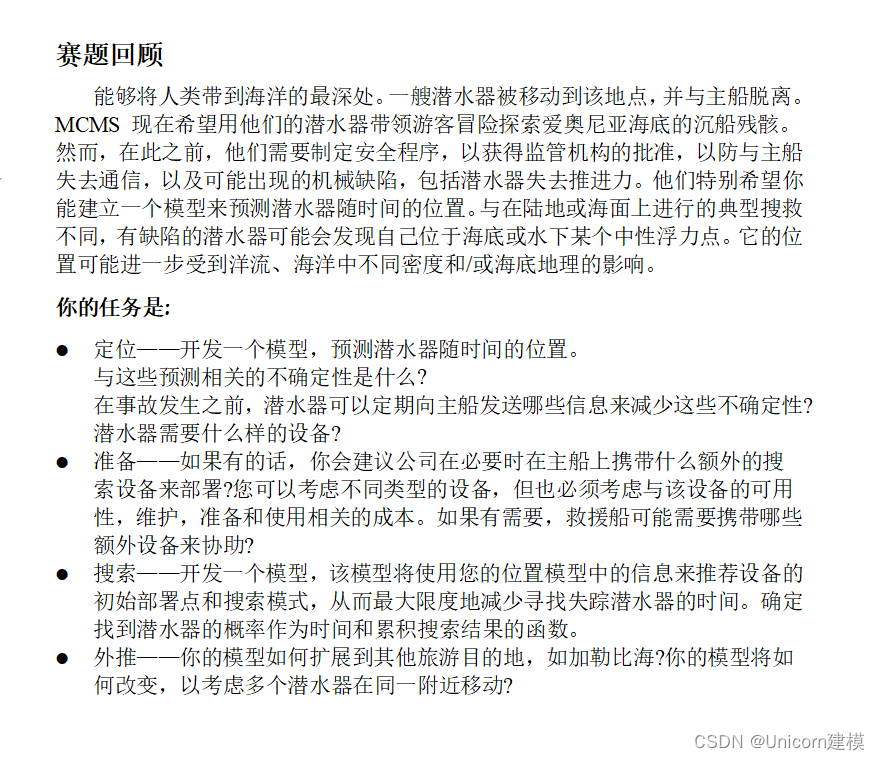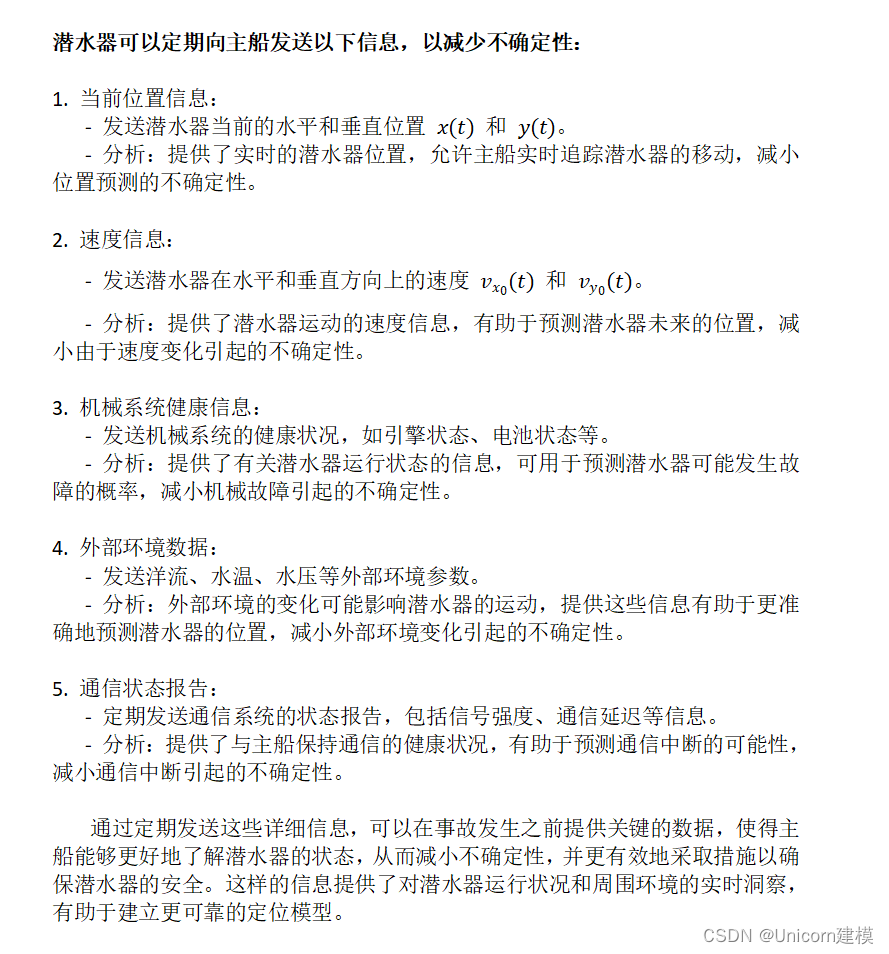首先回顾一下本次美赛B题:

问题1的解决思路如下:




python示例代码:
import numpy as np
import matplotlib.pyplot as plt
# 模拟时间
time = np.linspace(0, 10, 100)
# 初始位置
x0, y0 = 0, 0
# 期望速度函数(可根据实际情况调整)
def expected_velocity(t):
return np.sin(t)
# 不确定性项的标准差(可根据实际情况调整)
sigma_x = 0.1
sigma_y = 0.1
# 模拟机械故障和环境不确定性的随机项
delta_x = np.random.normal(0, sigma_x, len(time))
delta_y = np.random.normal(0, sigma_y, len(time))
# 计算位置
x = x0 + np.cumsum(expected_velocity(time) + delta_x)
y = y0 + np.cumsum(expected_velocity(time) + delta_y)
# 可视化模拟结果
plt.figure(figsize=(10, 6))
plt.plot(time, x, label='Simulated X Position')
plt.plot(time, y, label='Simulated Y Position')
plt.xlabel('Time')
plt.ylabel('Position')
plt.legend()
plt.title('Simulated Submarine Position Over Time')
plt.show()matlab示例代码:
% 模拟时间
time = linspace(0, 10, 100);
% 初始位置
x0 = 0;
y0 = 0;
% 期望速度函数(可根据实际情况调整)
expected_velocity = @(t) sin(t);
% 不确定性项的标准差(可根据实际情况调整)
sigma_x = 0.1;
sigma_y = 0.1;
% 模拟机械故障和环境不确定性的随机项
delta_x = sigma_x * randn(size(time));
delta_y = sigma_y * randn(size(time));
% 计算位置
x = x0 + cumsum(expected_velocity(time) + delta_x);
y = y0 + cumsum(expected_velocity(time) + delta_y);
% 可视化模拟结果
figure;
plot(time, x, 'LineWidth', 1.5, 'DisplayName', 'Simulated X Position');
hold on;
plot(time, y, 'LineWidth', 1.5, 'DisplayName', 'Simulated Y Position');
xlabel('Time');
ylabel('Position');
legend('Location', 'Best');
title('Simulated Submarine Position Over Time');
grid on;



















 1979
1979











 被折叠的 条评论
为什么被折叠?
被折叠的 条评论
为什么被折叠?








